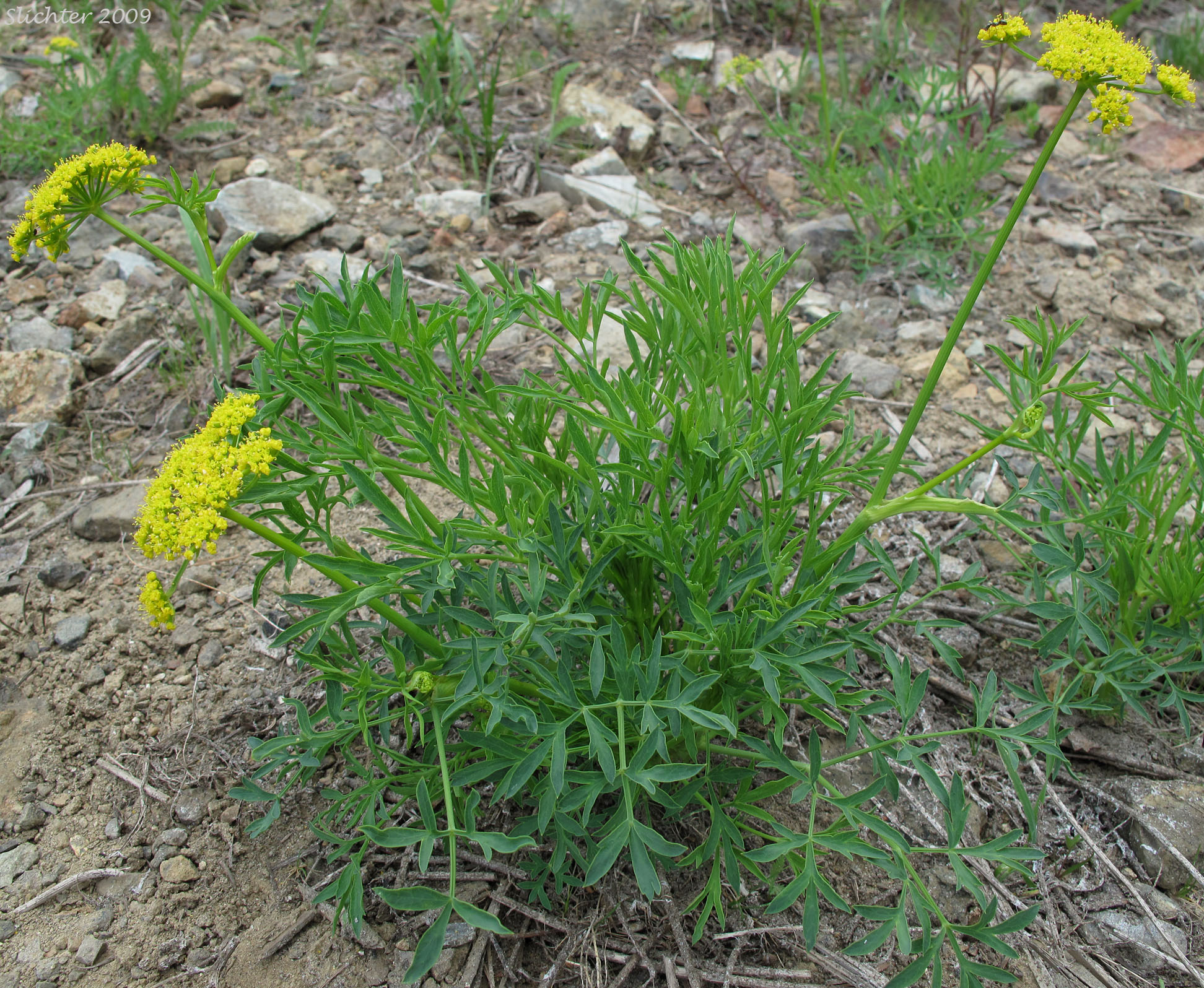
Brandegee's lomatium is a perennial wildflower with several to many erect to spreading stems from 20-60 cm long arising from a woody base atop a long, stout taproot. The herbage is largely glabrous and glaucous except for the ciliate margins of the leaf segments. The long petiolate leaves are either nearly all basal or may be found at the base as well as on the stems. The blades are ternate-pinnately dissected into broad linear to linear-elliptic or even lance-elliptic segments (See photos above and below.). The smaller segments are 1-5 cm long and measure from 2-8 mm wide.
The inflorescence consists of an umbel with the rays of unequal lengths, the longest measuring from 1.5-5 cm long. Several narrow bracts may be found at the base of each smaller umbellet, although the bracts at the base of the umbel are absent. The pedicels are very short and measure from 1-4 mm long in fruit. The flowers are yellow. The glabrous fruits are narrowly elliptic-oblong and mostly deflexed downwards (See photo at right.). They measure from 8-12 mm long and have wings from half to nearly as wide as the body of the fruit.
Brandegee's lomatium may be found on open to wooded slopes from the foothills to fairly high elevations in the mountains.
Brandegee's lomatium may be found on the east slopes of the Cascade Mts. and in the Wenatchee Mts. from Kittitas County north to Okanogan County in Washington.